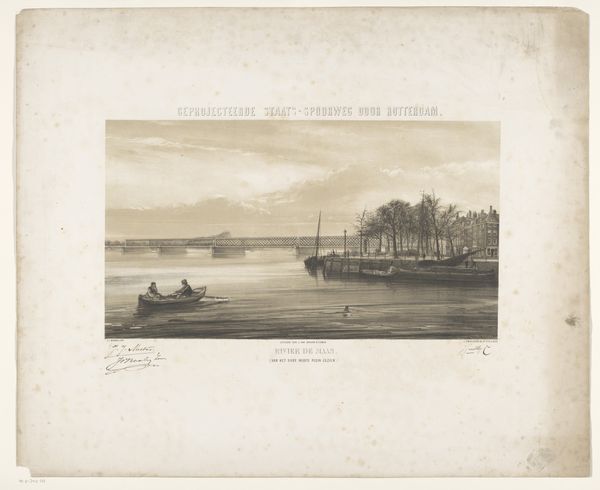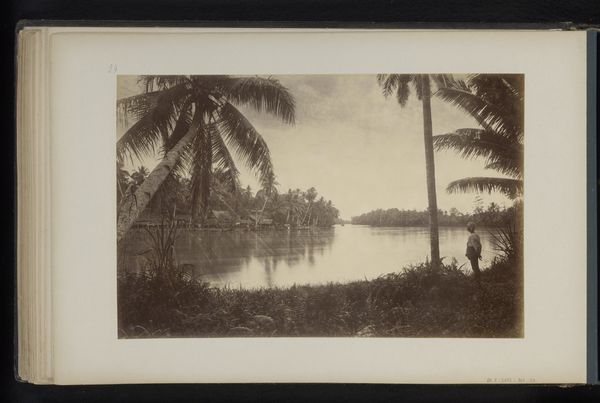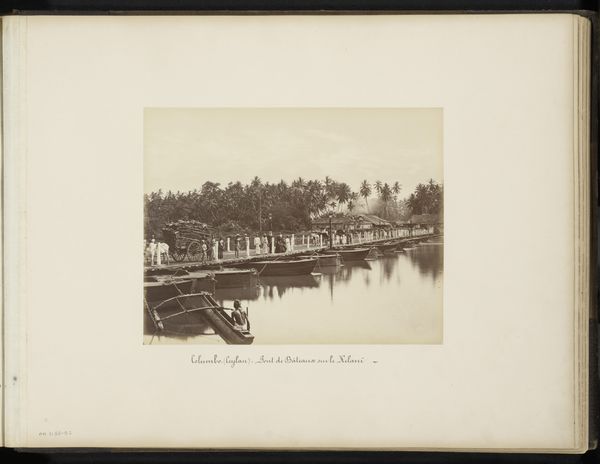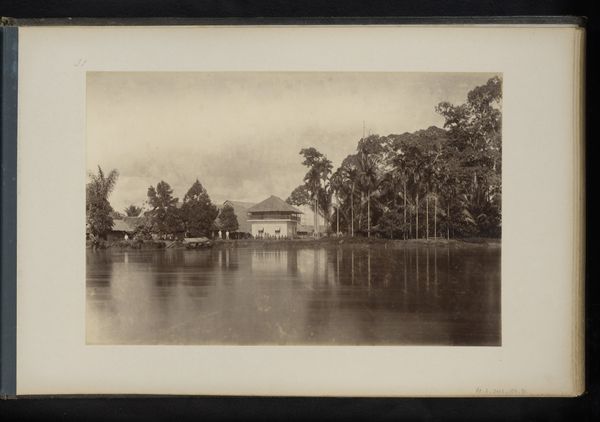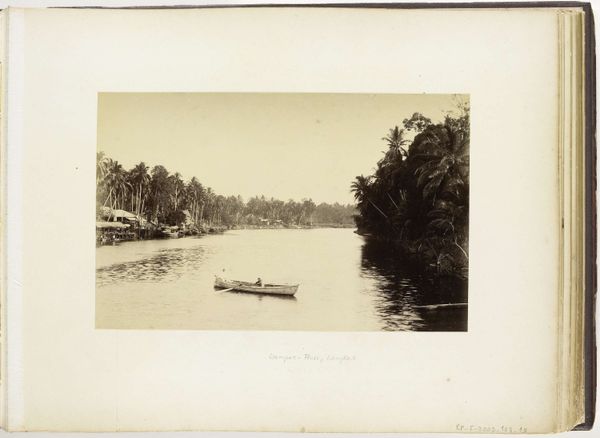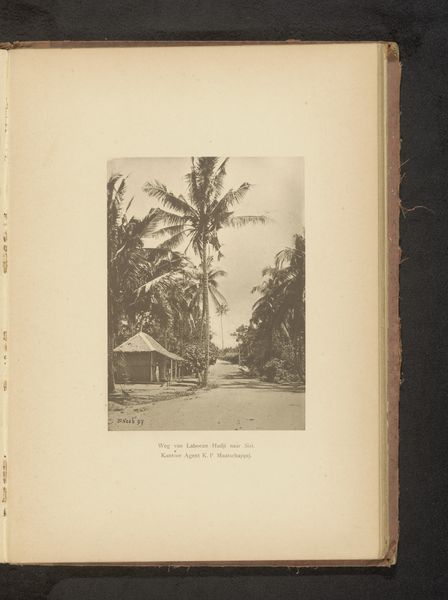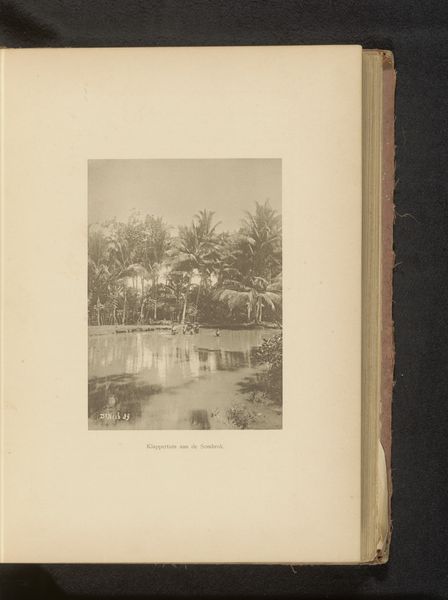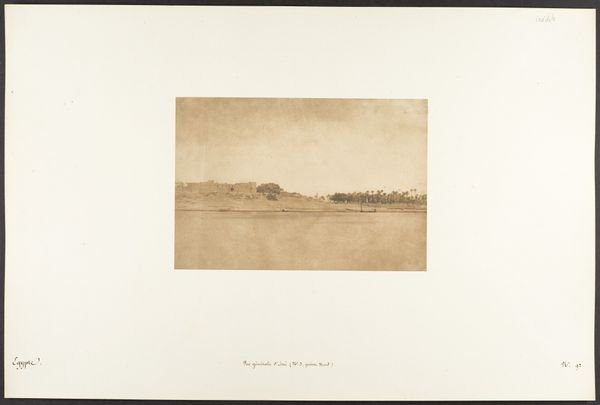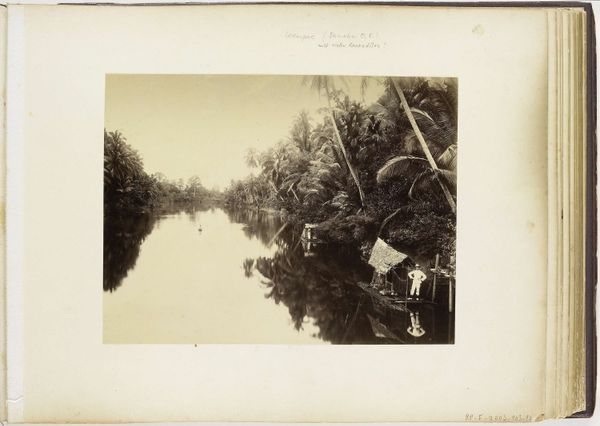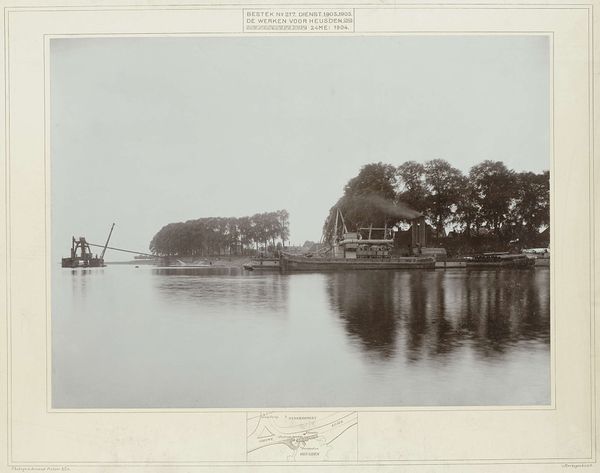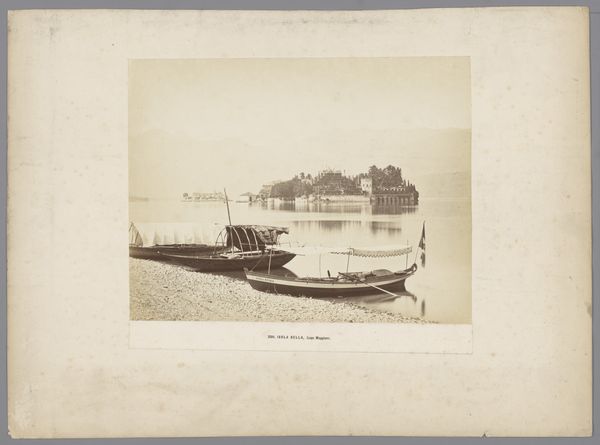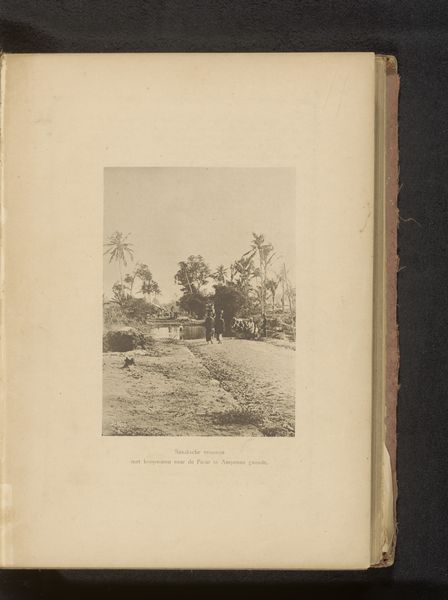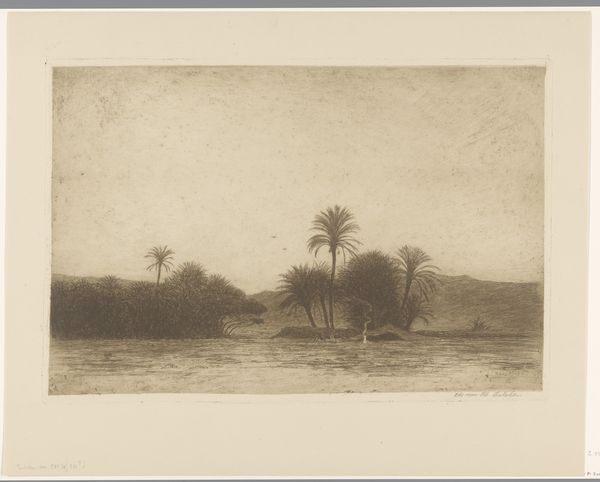
photography, gelatin-silver-print
#
landscape
#
photography
#
orientalism
#
gelatin-silver-print
Dimensions: height 185 mm, width 240 mm
Copyright: Rijks Museum: Open Domain
Editor: A languid and almost dreamlike image. There’s something quite beautiful in the muted tones and gentle ripples on the water. Curator: Indeed. What we're seeing is a photograph entitled "Gezicht op de kust bij Makassar," or "View of the Coast at Makassar," taken before 1883 by Woodbury & Page. The medium is a gelatin-silver print. Editor: Makassar, that's modern-day Indonesia, right? I'm curious about the materials and techniques used in early gelatin-silver prints. The process of layering gelatin emulsion onto a paper base, sensitizing it with silver halides – it all points to a specific labor. Curator: Precisely, and the composition itself—the strong horizontal lines created by the water meeting the distant shore, counterpointed by the verticality of the palm trees—demonstrates a deliberate visual strategy. There is something essentially Romantic about this scene, it hearkens back to the Picturesque aesthetic. Editor: It really does make one think about the historical context in which this photograph was produced, the access to exotic locations for early photographers, the equipment required, and even the colonial power dynamics at play to take this photograph in the first place. The physical and chemical processes reveal a specific approach to documenting and possessing the land, or at least an image of it. Curator: It is undeniable how the formal arrangement emphasizes the notion of viewing, inviting the viewer into an experience both picturesque and sublime. The tonal range alone creates an impressive sensation of spatial depth and luminosity. The composition acts almost as a proscenium arch. Editor: This work makes you think about how the raw materials are sourced for this medium. The silver mining, the gelatin from animal collagen, and how these materials become carriers of not just images, but embedded histories of extraction, production, and colonial gaze. Curator: It does pose an intricate play of visual structure that embodies this idea of paradise found; yet there's a layer of historical mediation which cannot be ignored, as you pointed out. Editor: Absolutely. Thank you, it's a privilege to unpack these layers. Curator: It was equally a pleasure to bring different perspectives to viewing such a unique piece from our history.
Comments
No comments
Be the first to comment and join the conversation on the ultimate creative platform.
